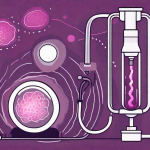Skin cancer is the most common form of cancer in the U.S., typically caused by exposure to UV radiation from the sun or tanning beds. The three main types are basal cell carcinoma, squamous cell carcinoma, and melanoma, with melanoma being the most aggressive. Regular skin examinations are crucial for early detection and prevention. Dermatologists play a vital role in detecting skin cancer, and individuals should consider scheduling full-body skin exams to establish a baseline and discuss the need for regular checks. When performing self-examinations, individuals should be aware of the ABCDE rule and look for any changes in moles or spots. Professional skin exams are necessary, especially for those at high risk due to factors like family history or fair skin. Dermatologists use tools like dermoscopy and mole mapping for accurate evaluation. Timely skin examinations can save lives by detecting cancer early when it’s most treatable. Overall, skin examinations are a simple yet powerful tool for early cancer detection and prevention, emphasizing the importance of staying vigilant and proactive about skin health.
Skin cancer, the most common form of cancer in the U.S., can be highly treatable when detected early. Regular skin examinations are key in early detection and play a significant role in your healthcare routine. This guide will delve into why and how you should conduct these exams, with insights from Cleveland Clinic and Mayo Clinic.
Introduction to Skin Cancer: Types and Prevalence
Skin cancer is the abnormal growth of skin cells, usually caused by exposure to ultraviolet (UV) radiation from the sun or tanning beds. There are three main types of skin cancer: basal cell carcinoma, squamous cell carcinoma, and melanoma. Each type has distinct appearances, but a common warning sign is any change on the skin, such as a new growth or a visible change in an existing growth or mole. While basal cell carcinoma and squamous cell carcinoma are the most common types and generally have a high cure rate, melanoma is the most aggressive and can spread to other parts of the body if not detected and treated early.
According to the World Health Organization (WHO), skin cancer is one of the most common cancers globally. The incidence of skin cancer continues to rise, making it essential for individuals to educate themselves on the importance of regular skin examinations.
The Importance of Regular Skin Exams
Regular skin examinations are crucial for the early detection and prevention of skin cancer. By making skin exams a part of our routine, we can spot any changes in the appearance of our skin and seek medical attention promptly if needed. This proactive approach increases the chances of successful treatment and better outcomes.
During a skin examination, it is crucial to check not only the most exposed areas, such as the face, arms, and legs, but also areas that are often overlooked, such as the scalp, between the toes, and the genital area. Skin cancer can develop in any part of the body, so a thorough examination is essential.
Dermatologists, with their specialized training, play a crucial role in detecting skin cancer. Adults who’ve never had a full-body skin exam should consider scheduling one to establish a baseline and discuss the necessity of regular checks.
What to Look For: Identifying Suspicious Moles and Spots
When performing a skin examination, it is crucial to be aware of the warning signs of skin cancer. Keep the ABCDE rule in mind:
- Asymmetry: One half of the mole or spot does not match the other half.
- Border: The edges of the mole or spot are irregular, notched, or blurred.
- Color: The color is uneven, with shades of brown, black, tan, white, red, or blue.
- Diameter: The mole or spot is larger than the size of a pencil eraser (about 6mm or 1/4 inch).
- Evolving: The mole or spot is changing in size, shape, or color, or a new spot is developing.
Remember, not all suspicious moles or spots indicate skin cancer, but it is essential to have any changes or concerns evaluated by a dermatologist for a professional opinion.
How to Perform a Self-Examination for Skin Cancer
Performing a self-examination for skin cancer is relatively simple and can be done in the comfort of your own home. Performing a skin exam every three to six months is recommended. Look for moles or spots that have changed in size, shape, or color, bleed, do not heal, are asymmetrical, have irregular borders, or are larger than ¼ inch. Here is a step-by-step guide:
- Start by undressing completely and standing in front of a well-lit mirror.
- Examine your face, neck, chest, and arms. Pay close attention to your nose, lips, ears, and the back of your hands.
- Move on to your scalp, parting your hair to expose your skin. Use a handheld mirror to examine the back of your head if necessary.
- Check your torso, including your back and abdomen. It may be helpful to use a handheld mirror or ask a family member for assistance.
- Continue examining your legs, including the front and back, as well as the spaces between your toes.
- Conclude the examination by checking the soles of your feet and the genital area.
If you notice any unusual growths, changes in color, shape, size, or texture, or spots that bleed, itch, or are not healing, it is important to consult a dermatologist for further evaluation.
Professional Skin Exams: When to See a Dermatologist
While self-examinations are important, regular professional skin exams conducted by a dermatologist are also necessary. Dermatologists undergo specialized training to recognize early signs of skin cancer and recommend appropriate treatment options.
If you have a high risk of skin cancer due to factors such as a family history of skin cancer, fair skin, past sunburns, or regular sun exposure, it is recommended to consult a dermatologist for routine examinations. Dermatologists can provide expert guidance tailored to your specific risk factors and ensure early detection and timely treatment if needed.
How Specialists Perform Skin Examinations
When you visit a dermatologist for a skin examination, they will conduct a thorough evaluation of your skin, paying attention to any suspicious moles or growths. They may use a dermatoscope, a handheld magnifying instrument, to examine individual moles in more detail.
If a dermatologist identifies any areas of concern, they may suggest a biopsy, which involves removing a small sample of the suspicious skin tissue for further analysis. Depending on the results of the biopsy, additional treatment or monitoring may be recommended.
Remember, a skin examination with a dermatologist is a proactive step towards maintaining your skin health. By working together with a specialist, you can ensure that your skin is expertly monitored and any issues are addressed promptly.
Take control of your health today by prioritizing regular skin examinations. By learning to spot the signs of skin cancer and seeking professional guidance when needed, you are empowering yourself to protect your skin and overall well-being. Your skin deserves the care and attention it needs to stay healthy, so start incorporating skin exams into your routine and embrace a proactive approach to your skin health.
Advancements in Skin Cancer Detection and Diagnosis
The field of skin cancer detection and diagnosis has seen significant advancements in recent years. Groundbreaking technologies and techniques, such as dermoscopy, mole mapping, and confocal microscopy, aid dermatologists in accurately evaluating suspicious moles and spots.
Dermoscopy involves using a specialized handheld instrument to examine the skin at a magnified level, allowing dermatologists to analyze the structures and pigment patterns more closely. Mole mapping, on the other hand, involves digitally documenting the appearance of moles and spots, enabling dermatologists to track any changes over time. Confocal microscopy is an advanced imaging technique that provides high-resolution images of the skin layers without the need for invasive procedures.
The Importance of Timely Skin Examinations for Cancer Screening
Timely skin examinations can save lives by detecting skin cancer at an early stage when it is most treatable. By taking a proactive approach to our skin health and staying vigilant for any changes, we can ensure that potential issues are addressed promptly and effectively.
Whether it is through self-examinations or routine visits to a dermatologist, dedicating time to caring for our skin is an investment in our overall well-being. Prevention and early detection are key to reducing the impact of skin cancer on our lives and protecting ourselves from its potentially devastating consequences.
Conclusion
Skin examinations are a simple yet powerful tool in early cancer detection. By staying vigilant about changes in your skin and consulting with a dermatologist when necessary, you can significantly reduce your risk and ensure prompt treatment if needed. Remember, your skin tells a story – make sure you’re listening.






